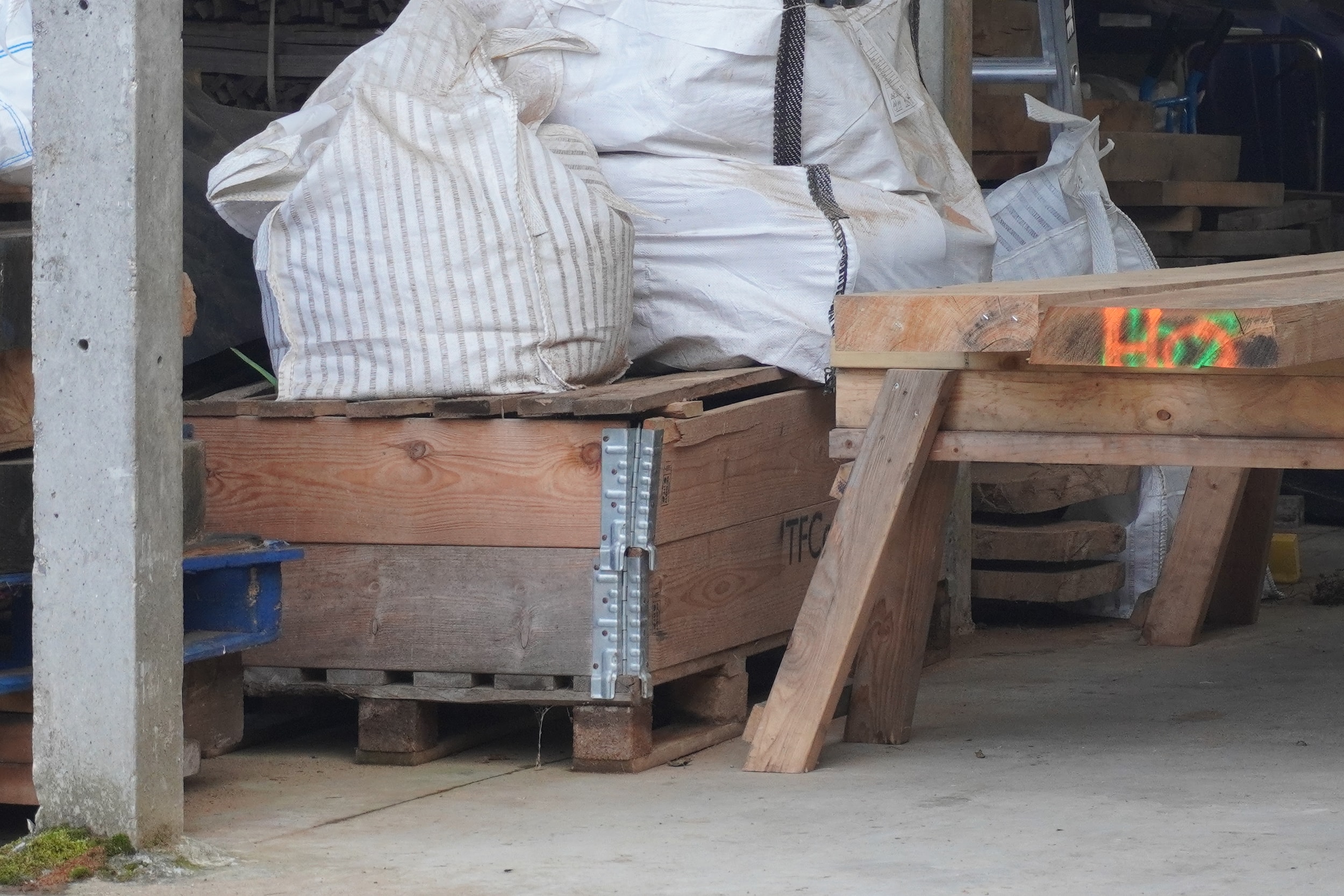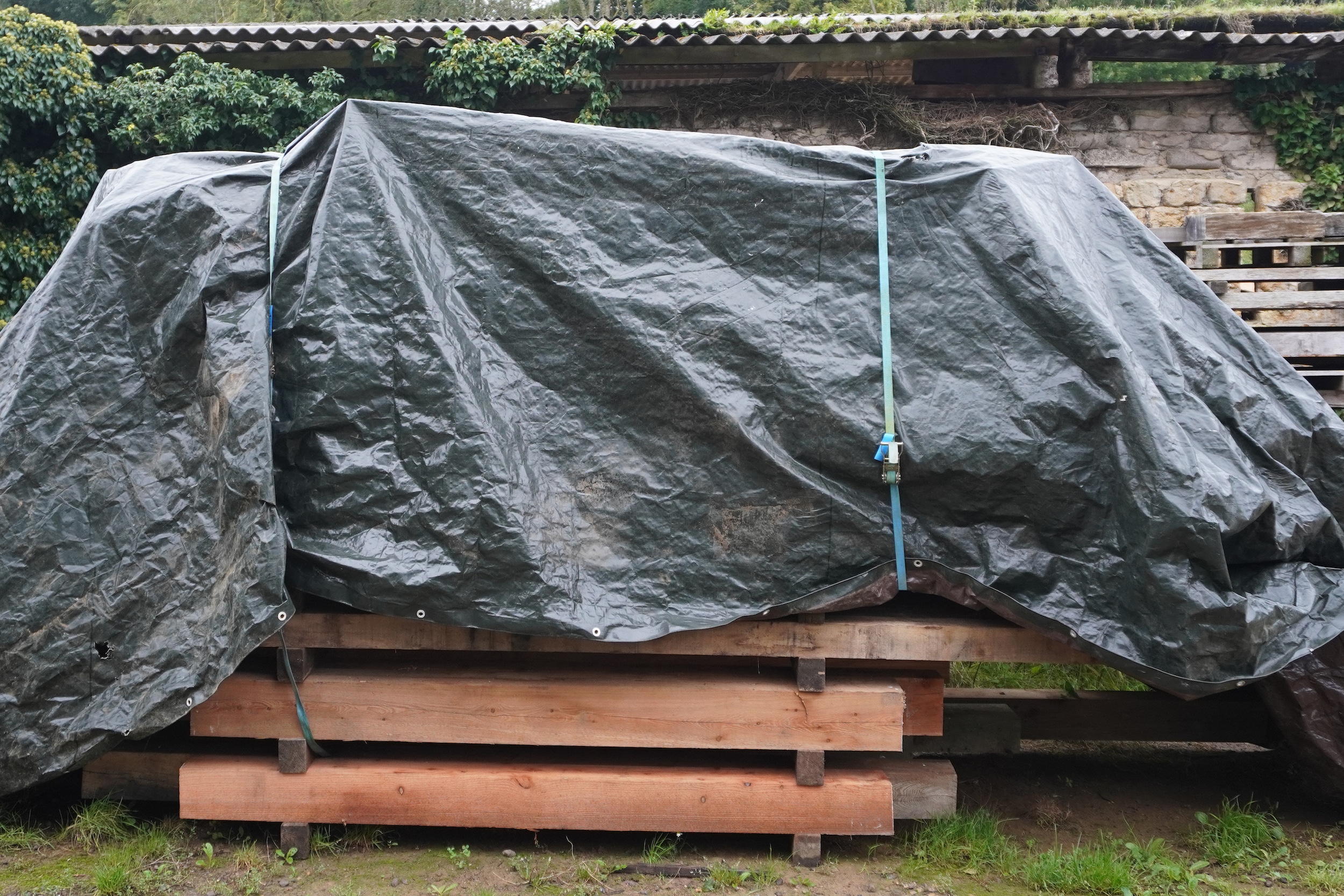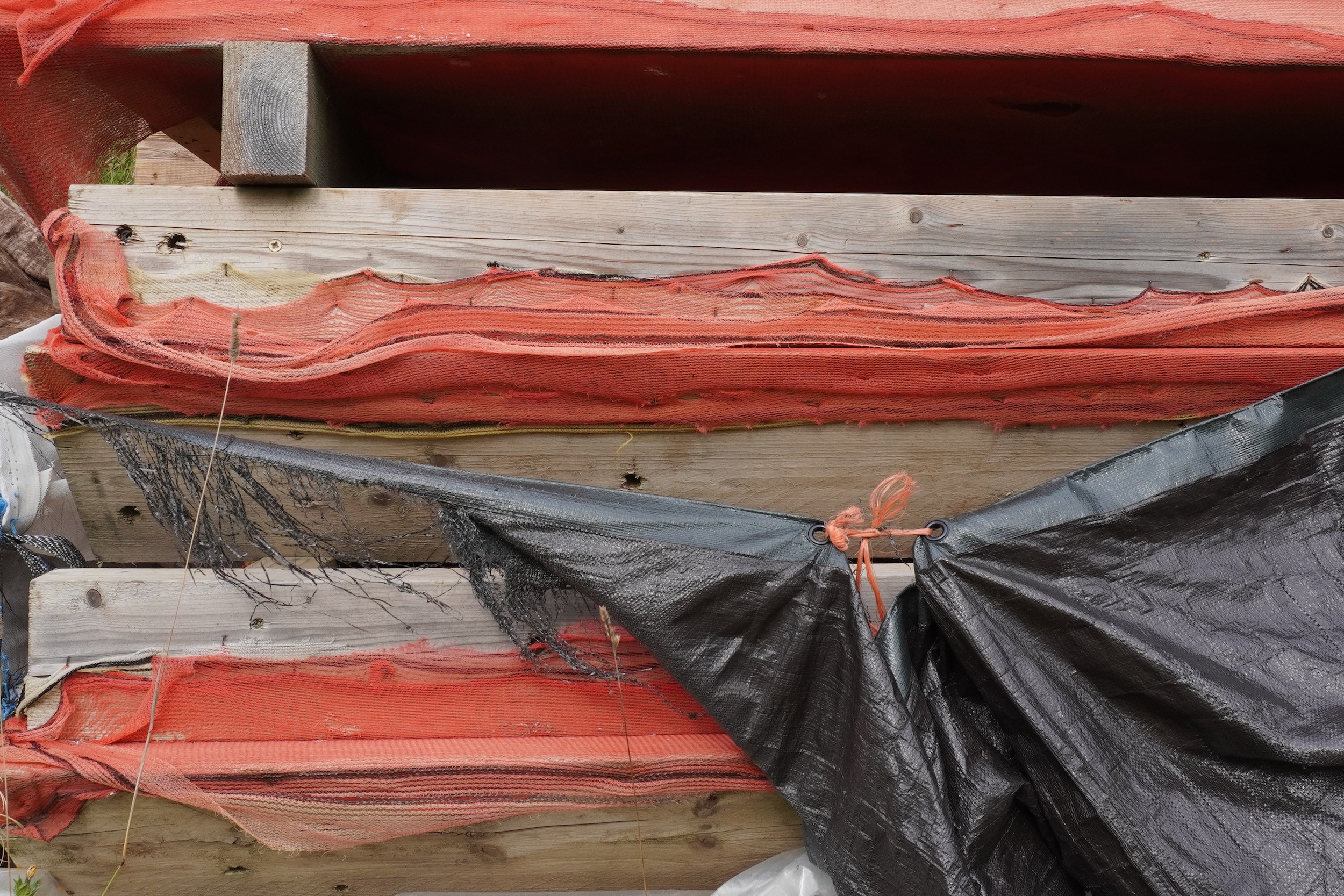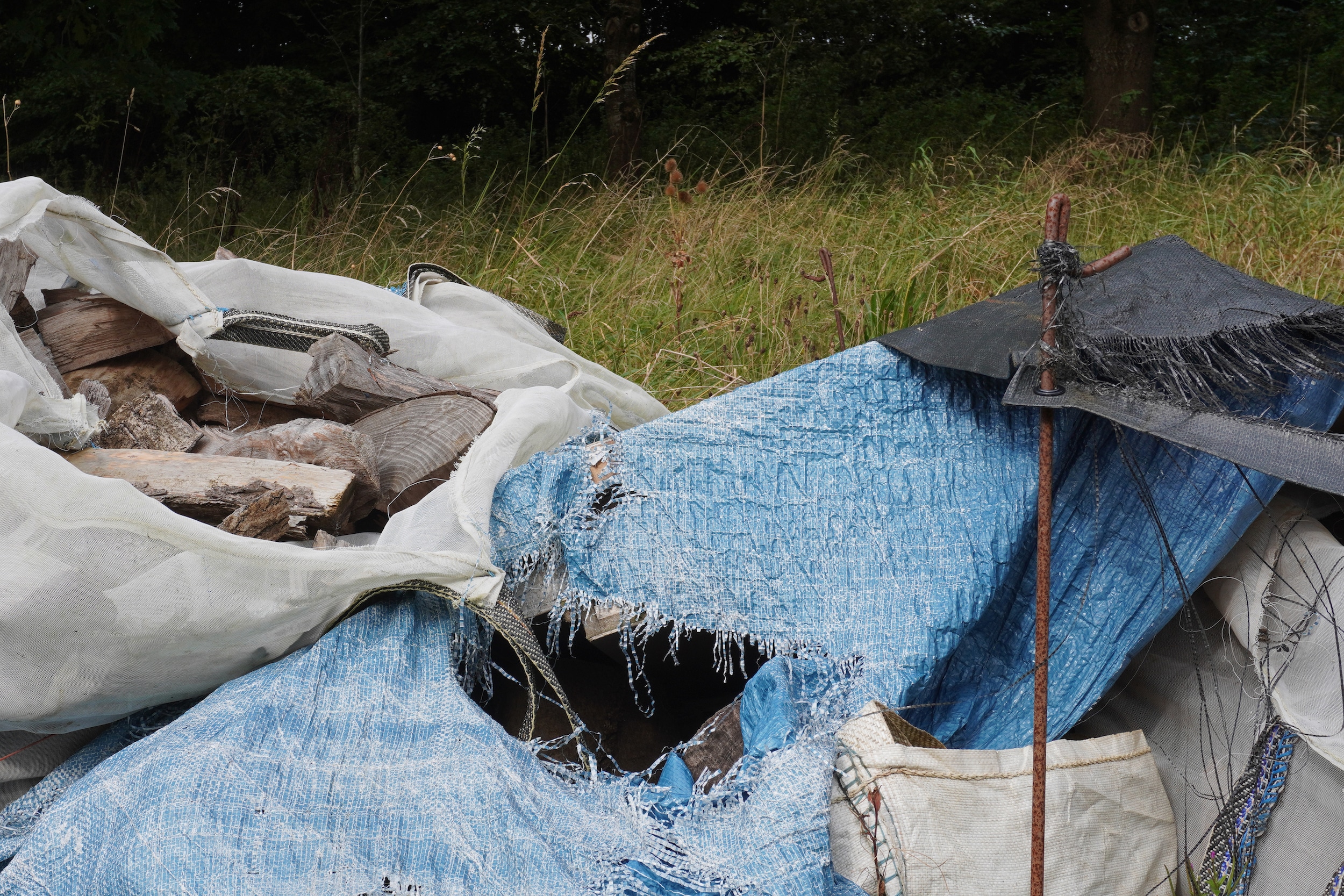Shatwell Farm: Covering Over, Bagging Up, Tying Down
This text is the fourth in a series of studies of Shatwell Farm made by Emily Priest while staying on site in September 2023.

Tarpaulin has its origins in 17th-century maritime communities. Sailors, who were nicknamed ‘tarpaulins’, used to sleep on decks under hard-wearing fabrics which were impregnated with tar- as a waterproofing agent, while -paulin denoted terms such as ‘cloak’ or ‘covering’. Tarpaulin was made from flax canvas until the 20th century, before being mass produced using synthetic fibres such as polyethylene. It is a material used almost everywhere and has had a prominent role in providing shelter to millions of people who suffer displacement due to social and political factors, and natural disasters.
Different grades of the material are used in construction for temporary shelters, scaffolding covers and storage, as well as in camping equipment, large and robust shopping bags and cargo covers for lorries. In agriculture, tarpaulins—or tarps—are used as covers for feed, protecting yields, and animal shelters. They also help with managing dampness and temperature levels in greenhouses or temperate areas of growing. It is difficult to think of a more recognisable, ubiquitous, and versatile material.
Stripey and sack-shaped, stretched and torn, semi-transparent and sun-bleached; the tarps found around Shatwell Farm provide a distinct colour contrast against the metal and masonry sheds and silos. The tarps on the farm were mainly white, blue, orange, and black. I later found that tarpaulins are colour coded according to their common uses. White tarps offer shade from the sun and tend to be used for tents. Blue tarps are meant for light industrial work and are popular in construction and farming. Orange tarps tend to be deployed as firewood and vehicle covers. Black tarps are more heavy duty and keep their contents cool by absorbing sunlight.
In addition to its retrofitted tarpaulin walls and window panels, I found tarpaulin sacks inside the Allen and Co shed, slumped on top of large timber palettes. They were being used for log storage by the Timber Frame Company. The logs were bagged up in white tarp log bags, which have subtle stripes made up of an alternating permeable weave that allows ventilation into the sack. This ensures that the logs remain dry while they are stored or transported. Already, there were two different uses of the same material in different grades, in one place used by the same people.


Behind the Allen and Co. shed, a big sheet of black tarp was bound around sawn timber to provide shelter from the rain. It was held around the planks with two tie-down straps. In the far north corner next to the Hay Barn, timber palettes—perhaps from a performance or previous structure from some time ago—were wrapped with frayed black tarp. Orange string was used to tie the sheet together through the tarp’s grommets. Next to the palettes, a faded and worn out—though nevertheless fully functional—tarp sheet covered more cut timber and logs. Possibly firewood. This tarp sheet was held up by a rusty fence post.
On first inspection, the tarpaulin covers, panels, and bags around the farm and behind buildings seemed to group themselves together with the hay bales stored behind the Cow Shed, the multicoloured plastic recycling bins out front and the skips awaiting collection, as this is the inevitable clutter and mess that comes with a working site and that which is usually hidden out of photography.
Tarp is used in so many different ways and is immediately recognisable to us as something accessible, useful, and hardwearing. Despite its universality, tarpaulin is nearly always applied in very considered and specific ways, whether the design is industrially produced like a log bag or as a sheet that is fixed, tied, or wrapped by its individual user. It is a product that can be reused and reconfigured over and over again. It requires very little maintenance and care, and works very hard to protect and shelter its contents.

Emily Priest is an architect and writer from the UK West Midlands.

– Gerard Carty, Elizabeth Hatz and Fionn O'Leary